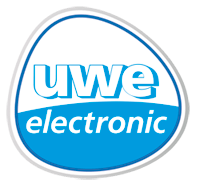 We offer different solutions using the following flexible heater supports and insulation materials: mica, polymide, silicone and polyester. These flexible heater supports differ from their features and they are suitable for different fields of application. Depending on the design, the different combinations of incorporated materials determine the final product characteristics.The following table shows the specific features:
We offer different solutions using the following flexible heater supports and insulation materials: mica, polymide, silicone and polyester. These flexible heater supports differ from their features and they are suitable for different fields of application. Depending on the design, the different combinations of incorporated materials determine the final product characteristics.The following table shows the specific features:
| Mica | Polymid | Silicone | Polyester | |
|---|---|---|---|---|
| Features of the base material | - vacuum suitable - inelastic - mechanical fixing |
- vacuum suitable - chemical- resistant |
- not vacuum suitable - chemical- resistant - also for commercial applications |
- transparent - vibration proof - abrasion proof - low priced |
| Field of application | - production of semi- conductors - chem. industry - machine-/ plant construction |
- medical technology - aerospace industry - industrial technic - laboratory technic |
- construction of apparatus - heating for housing - hot cabinet |
- LCD-display heating - tempering of pocessors to keep them transparent (laboratory applications) |
| Operating Temperature | -150 to +400°C | -200 to +200°C | -50 to +200°C | -50 to +100°C |
| Minimum Thickness of the heater | approx. 2,0mm | approx. 0,1mm | approx. 0,8mm | approx. 0,25mm |
| Puncture strength | 1000/2000 VRMS | 1000 VRMS | 1000 VRMS | 500 VRMS |
| Max. Heating output | 5 W/cm² | 4 W/cm² | 4 W/cm² | 1 W/cm² |
| Traces | - Inconel 600 - Stainless Steel 18SR |
- Inconel 600 - Stainless Steel 18SR |
- Inconel 600 - Stainless Steel 18SR |
- Inconel 600 - Stainless Steel 18SR - Aluminium - Copper |
| Min. bend radius | - | 8mm | 10mm | 10mm |
| Connection Types | - Braising on alloy Ni/Cr - Microwelding on alloy Ni/Cr |
- Braising on alloy Ni/Cr - Microwelding on alloy Ni/Cr |
- Braising on alloy Ni/Cr - Microwelding on alloy Ni/Cr |
- Braising on alloy Ni/Cr - Microwelding on alloy Ni/Cr - Tinning on copper - Crimping on aluminium |
| Temperature Controllers |
|
|||





